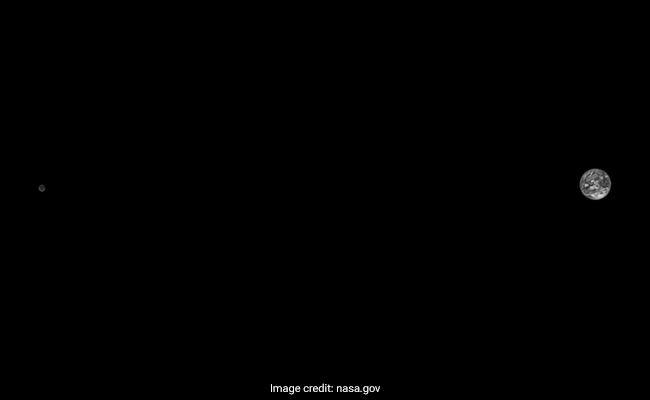
NASA's Lucy probe, a mission to a group of asteroids near Jupiter, flew past Earth on October 16 and took some stunning photos of our planet and the moon before retreating to deep space. Earlier this week, the American space agency released the images Lucy's cameras took of the Earth and Moon as it passed as close as 224 miles (approximately 361 kilometres) to Earth - lower than the orbit of the International Space Station (ISS).
The first of the two Earth images, snapped by Lucy on October 13, highlighted the incredible distance between the Earth and the moon. As per NASA's (National Aeronautics and Space Administration) press release, at the time, the two bodies sitting at the opposite edges of the frame were about 890,000 miles (1.4 million kilometres) away from Lucy.

The second picture snapped on October 15 is a close-up shot of the Earth, taken at a distance of roughly 380,000 (620,000km). In the image, Hadar, Ethiopia - which is home to the 3.2 million-year-old human ancestor fossil - is visible on the left-most edge of the planet.

Lucy also took pictures of the moon on October 16. The images were taken while Lucy was between the Earth and the moon, approximately 160,000 miles (260,000km) from the moon, so it showed a perspective familiar to Earth-based observers.

NASA's Lucy probe was launched in 2021. It is the first mission to the Jupiter Trojan asteroids - two swarms of space rocks that share the giant planet's orbit.
This month's flyby was the first of three such manoeuvres the spacecraft will use to get up to speed to visit the Jupiter Trojans. As per NASA, the spacecraft will be performing another close buzz of our planet in 2024 before finally heading out into deep space. On its 12-year journey, Lucy will fly by a record-breaking number of asteroids and survey their diversity, looking for clues to better understand the formation of the solar system.

